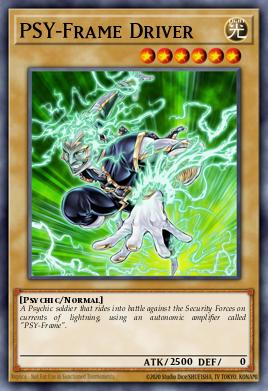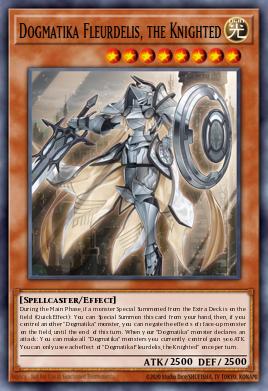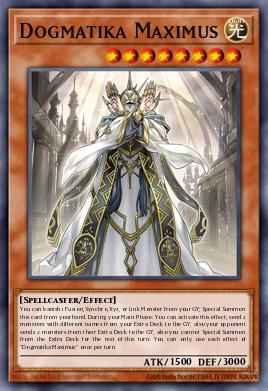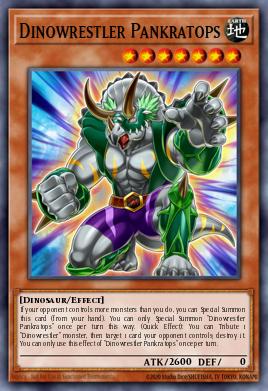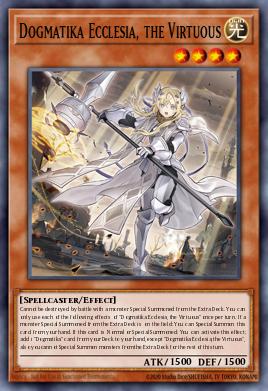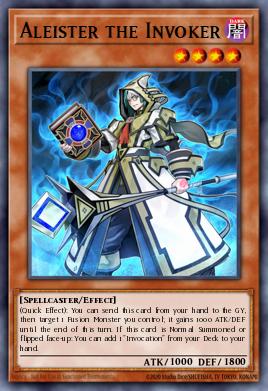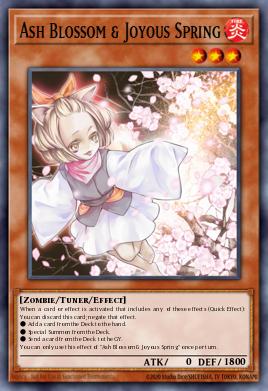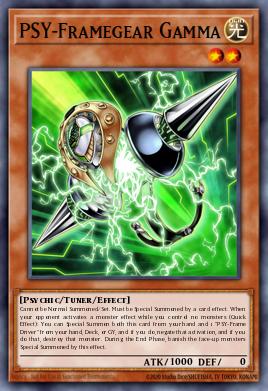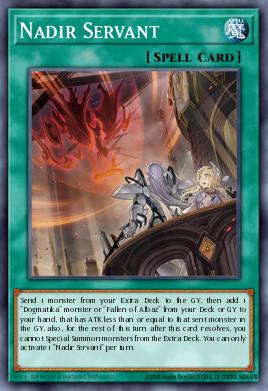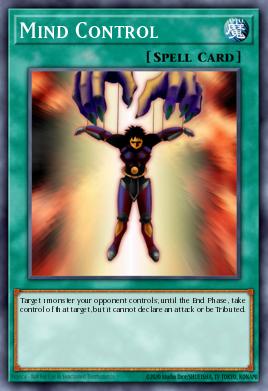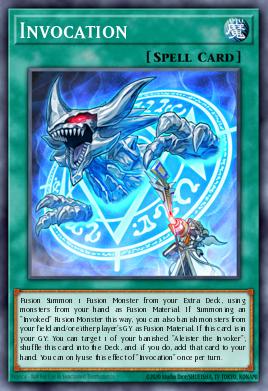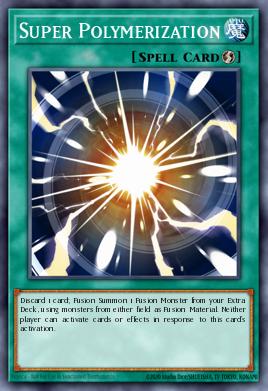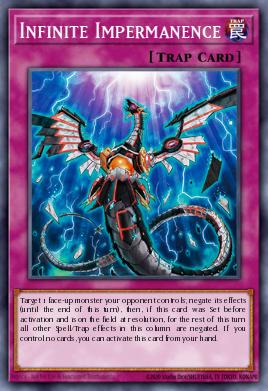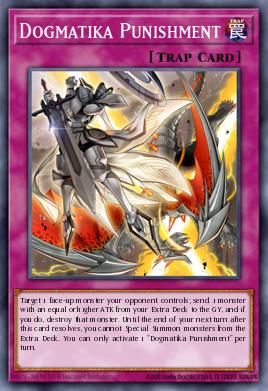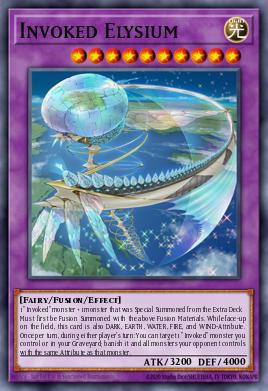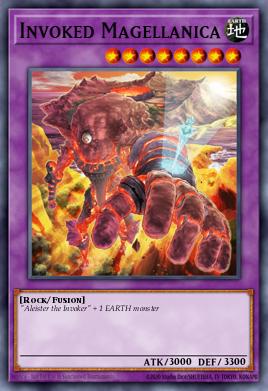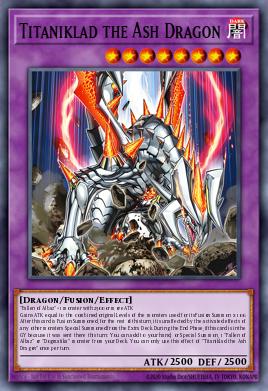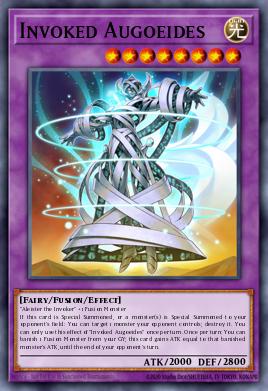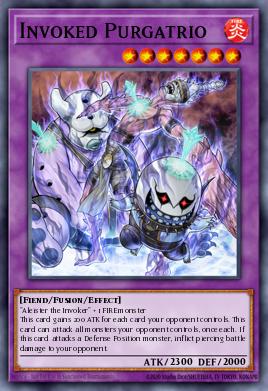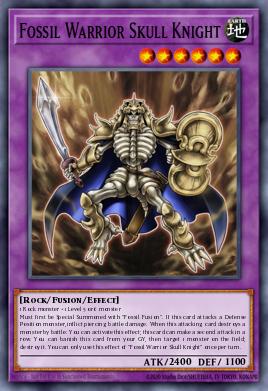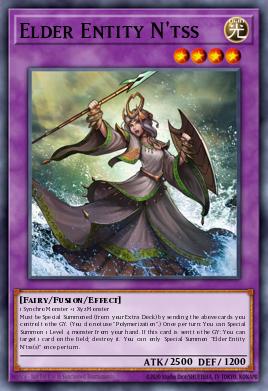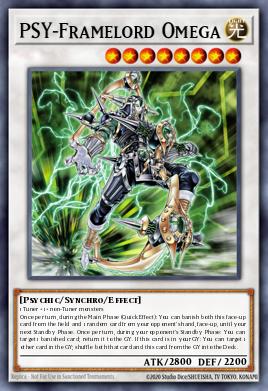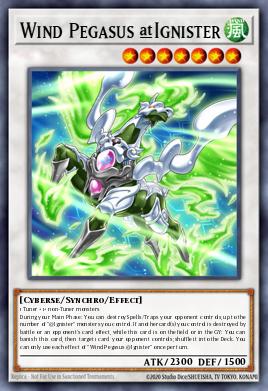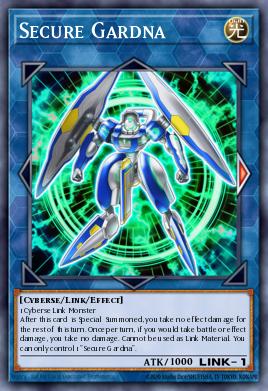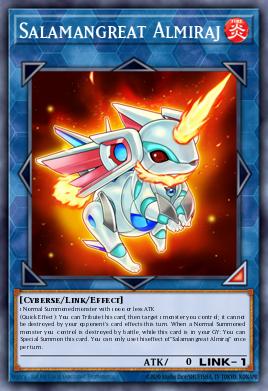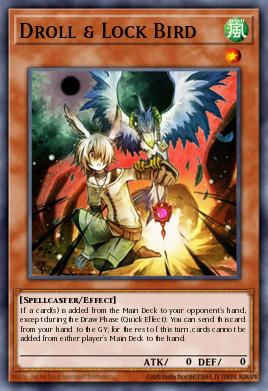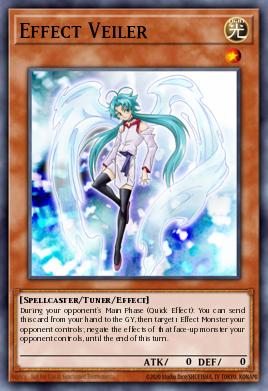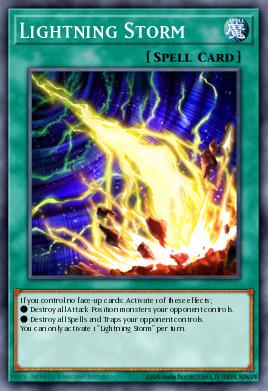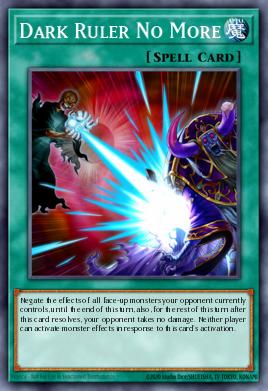Invoked Dogmatika - Oct 17th Build for YCS 10
Deck Primer
1) Acknowledgements
2) Decklist and Techs
3) Combo Guide
4) Final Thoughts
1. Acknowledgements
Welcome back everyone, another month passes and I play in another of MBT’s Yu-Gi-Oh Cwarantine Series (Link to Top-Cut Here). Unlike last time I chose to take a meta-deck in favour of an updated build of my favourite mid-range deck from last month (Check it out here). The deck I chose to take was my personal build of Invoked Dogmatika. I’ve been experimenting with Dogmatika casually in the online space since they were announced. I started testing the engine with the Invoked archetype after I saw Nicolai Howlett’s top at the Prodigy Games ROTD Case tournament in August (Link to deck profile here). I’ve made use of a lot of great guides and resources in the creation of this list so I’ll link all of them here, they’re all worth a look if you’re working on your own build: lilthunderygo’s build, Smouv’s guide, and Seniorious’s build. Special thanks to Seniorious for helping me with the techs and extra-deck the night before YCS 10.
2. Decklist and Techs
Main-deck: The Usual Suspects
Aleister the Invoker x 3
We begin with one of the best normal summons of the year: Aleister the Invoker. Playable in decks from Mekk-Knight to Eldlich he forms the summon portion of a 10-card Invoked engine that generates repeated negates and board presence turn after turn. If you are unfamiliar the standard opening play is to find and normal summon Aleister before using his effect to search Invocation before linking him off for Salamangreat Almiraj and Secure Gardna in turn. This gives us material in grave for not only summoning Invoked Mechaba this turn but also for summoning Invoked Purgatrio for a swift OTK next turn. Another thing to note is Aleister’s second effect that allows us to boost the attack of any fusion monster, even during the damage step. This can be used to save one of our fusions from battle destruction or to help with our OTK. We have seven-ish main-deck copies of Aleister so about a 65% to open one makes this opening play highly consistent. I don’t think there's an Invoked build out there that wants to run less than three Aleisters so I’d stick with this ratio.
Dogmatika Ecclesia, the Virtuous x 3
While this isn’t ideally your normal summon I thought it would make sense to group it here based on its effect. Dogmaticka Ecclesia, the Virtuous is another powerful searcher that, like Aleister, is the centre of a powerful advantage-generating engine. She can special summon herself from the hand “if there is a monster summoned from the extra deck on the field” at which point she can search any Dogmatika card from the deck. This is easily accomplished on your first turn due to our above mentioned Aleister play allowing us to add another interruption to our opening board. We play a total of six copies so you’ll be seeing Ecclesia about 55% of the time; you’ll see her and Aleister together about 35% of the time. These are very good odds for a low investment two-to-three plus negates on your turn one board in my opinion, hence why I choose to play three. If you’d like to experiment with less I have tried two in more budget-friendly builds.
Dogmatika Maximus x 1
Next up is a controversial one. Dogmatika Maximus can be a huge swing for either player depending on the composition of both players’ extra decks. This is all due to Maximus’s high-rolling effect that lets both players send two cards from the extra deck to the grave. If the Foolish goes off unpunished you can get a huge amount of set-up or removal for free, plus the value of milling your opponent’s extra deck for at least two. The most common way you’ll see this punished is with your opponent sending a couple of their own Elder Entity N’Tss to pop your board, although some still choose to play the Cyber Dragon Nova plus Invoked Mechaba combo. Since Maximus is searchable of off Ecclesia I don’t feel like you need to main-deck more copies but siding one-to-two more could be viable depending on if you think you’ll be punished for the effect or not.
Dogmatika Fleurdelis, the Knighted x 2
Finally we’ll finish out this look at the main-deck monsters with Dogmatika Fleurdelis, the Knighted. It’s searchable off of Ecclesia and Titaniklad the Ash Dragon’s effects like Maximus but unlike Maximus; Fleurdelis is a quick effect. As long as there’s an extra-deck monster on the field you can special-summon Fleurdelis from hand and then if there’s a Dogmatika monster on field you can negate one face-up monster’s effect. As I mentioned with Ecclesia it’s very likely you’ll end the first turn with an extra-deck monster on the field; so this effect is live on a minimum of 70% of your opening boards. Now due to the wording of Fleurdelis’s effect it can't be used to hit trigger effects that activate on the field such as Stratos-style search or permanent effects like Eldlich the Golden Lord’s attack gain on summon effect. Besides those this effect will hit most any other effect activation you might need it to. We run two for that reason and because its highly searchable off of Ecclesia and Nadir but you can try three if you value opening it more.
Spells and Traps
Nadir Servant x 3
We begin our look at the spells with the Dogmatika searcher Nadir Servant. For the price of one monster sent from the extra deck you can search any Dogmatika monster with an attack equal or less than the monster you sent. The most common targets for this effect tend to be Titaniklad to search Ecclesia or Fleurdelis, or N’Tss to pop. You can get a maximum of two pops and an effect negate on field with this line — add a Mechaba to this and you have our ideal opening board. It’s important to remember that like Punishment this effect will lock you out of the extra-deck for the rest of the turn, so make sure to fusion summon first. I would recommend always playing three Nadir if you can as it is a fantastic consistency booster for your Dogmatika lines; it boosts our chances of opening Ecclesia to 58% going first.
Harpie’s Feather Duster x 1
The bugbear of control decks stalks through our list. Beyond Eldlich there aren’t a ton of decks that want their back-row wiped so this becomes a powerful equalizer. This came in especially clutch against other Dogmatika decks as it allows us to clear their Punishment or Impermanence with zero risk to our monsters. Incidentally like our above-mentioned Lightning Storm, Harpie’s can completely blow out lesser control decks like Guru or Monarch. I would recommend running one of these in either the main or side deck if you can afford the space.
Triple Tactics Talent x 2
Now on to our super-pushed Called By The Grave replacement. Triple looks broken on paper as it features three of YuGiOh’s most busted card effects. Depending on the situation you can either: draw two, scout your opponents hand and discard one, or take control of an opponent’s creature. Picking the right one at the right time can end games by itself, especially against tier three decks and below. We play two copies main to counter our opponent’s Ash Blossom or Effect Veiler on our Aleister or Meltdown on turn one. You could play less but I like having a 33% chance to open some kind of handtrap hate.
Mind Control x 1
Another tech from Seniorious here, Mind Control is a real blowout card going second. Most often we use it to bait out negates from the like of Herald or Savage Dragon, as if they don’t negate it we take their largest monster. As with most of our text it’s also a huge blowout against non-meta strategies. The only weakness of this tech is the lack of uses for a taken monster beyond trading up. If you’d like to make this pick more synergistic then I’d maybe look at playing something like the Knightmares or I:P Masquerena in the extra deck if you can make the space.
Terraforming x 1
So it should be obvious why we’re playing this as it’s a fourth copy of Meltdown. If it’s not obvious Meltdown is a starter that gives our fusion summons protection and Terraforming is just another copy. There is some potential synergy with other fusion spells like Secret Village of the Spellcasters or Magical Mid-Breaker Field in order to keep Terraforming live later in the game. I would always include this in an Invoked build but if you want to drop it expect the consistency to drop.
Invocation x 3
Invocation needs no introduction these days as one of the greatest fusion spells of all time, next to Red-Eyes Fusion. It allows us to fusion summon any monster and if it’s an Invoked monster we can use materials from the hand, field, or either graveyard. This can be huge as it allows us to use our follow-up plays to clear problem cards from our opponent’s graveyard. This can be used to turn problem floaters like Eldlich the Golden Lord into a Mechaba on the follow-up. Also of note is Invocation's graveyard effect that allows us to recycle our banished Aleisters for follow-ups or the convenient attack boosting effect. We run three Invocation for the increased chance to open it as Aleister’s effect attracts negates like no other and we want our opening to be consistent. You can run two if you don’t want to open it but be wary of handtraps if you do.
Super Polymerization x 3
Onto one of the last bad calls I made in this build. Super Polymerization is an incredible card in any fusion-based deck with flexible materials as it lets you clear threats in a way that your opponent cannot respond too. The thought for playing it here was that I could use it as a way to resolve a negated Aleister without drawing Invocation. This worked in testing against less meta strategies but struggled against the superior tempo of the tier one decks. I could see a place for this in a budget Invoked build but for meta Forbidden Droplet is a better choice. Try this if you’d like but I don’t recommend it.
Magical Meltdown x 3
Magical Meltdown is an essential inclusion. It functions as four more copies of Aleister and allows us to protect our fusion monsters and summons. I’ve also found it useful to bait out Ash Blossom or the occasional Ghost Ogre in scenarios where we draw Aleister and Meltdown. In the updated build I often send Magical Meltdown for Forbidden Droplet as once you’ve searched Aleister and fusion summoned it’s better to get it off the field for the plus two. Overall there's no reason to run less than three of this in any build in my opinion.
Dogmatika Punishment x 3
The final card of our main-deck is one of my favourite cards in the deck. Dogmatika Punishment is one of only a few playable trap cards in the current format, next to the previously mentioned Infinite Impermanence. Punishment allows us to send a card from the extra deck to pop a monster with equal or lower attack than the monster we sent. Half the extra deck is geared around this effect so there are a number of optimal targets depending on your situation. I’ll mention a couple here but you’ll find the rest below. The two I find myself sending on my opponent’s first turn most are N’Tss for the dual pop or Titaniklad for the follow-up Ecclesia or Maximus play. It’s important to note that Punishment locks you out of summoning till the end of your next turn, so use with caution if you plan to follow-up with Purgatrio. Some builds run two of this but I chose three in anticipation of grindy mirrors, and this payed off, however I would caution against that choice going forward. With more coverage of the deck the player base is likely to start siding against this strategy specifically. Expect more blowout cards and shorter games going forward.
Side Deck and Tech Choices
Notes on the side
Normally I wouldn’t go into a lot of depth on the side deck as I tend to feel like sides are best as personal calls made by players with a specific meta in mind. On this occasion I've decided to analyze my picks here as I feel the meta of YCS 10 is worth exploring. Hopefully this approach helps you all make better siding choices in future events this year, as we’re not seeing a banlist update till December 15th at the earliest (Source). We’ll start with the side deck and my reasons for playing them before going over the main-deck tech cards in the same fashion.
Nibiru, the Primal Being x 3
We begin our look at the side deck with the format staple Nibiru, the bane of combo decks everywhere. Now rarely alone is this enough to stop tier-one combo decks like Dragonlink or Infernoble but you need to understand this card in terms of its place among other disruption. I board this in going second in hopes of drawing it with another powerful handtrap like Gamma which can be enough to buy me a turn to set up my more recursive negates. This happens about 10% of the time so I wouldn't count on it if you're expecting a higher density of Dragonlink than I was. Against anything under tier three or so Nibiru is absolutely devastating even by itself as most decks don’t have enough extenders to continue their combo or setup. I ended up resolving this way more in practise than I did in the tournament. I’d chalk that up to the density of rogue decks in my practise environment as opposed to any of my match-ups being Nibiru-proof or something. If you expect a high density of Dinosaur or Infernoble I’d take this out in favour of mass removal, but for most general match-ups this is a good pick at three.
Droll & Lock Bird x 3
On to Droll & Lock Bird, a necessity against many of the same decks mentioned above. Droll has a storied history in various decks, most notably Trickstar with the dreaded Droll loop. Today we play Droll & Lock Bird for much the same reason we play Nibiru: to fade Dragonlink and Infernoble going second, and to crush rogue-tier decks like Numeron variants and Adamancipator before they can build powerful boards. It can come in clutch in the mirror as well due to how many opportunities you have to activate it such as Nadir Servant or Magical Meltdown. As with all of the handtraps I play at three you have a 33% chance to open a single copy of this, so I wouldn’t cut down on them if you value being able to play against meta.
Effect Veiler x 3
This will be the first of a few bad calls I made going into the tournament that I’m going to discuss in this guide. Effect Veiler is a solid handtrap in a vacuum due to it essentially being three more copies of Impermanence. In addition it has a fantastic typing for the Selene combos that many decks are using to summon Accesscode Talker. I chose to side Effect Veiler because I was expecting to see a lot more Mekk-Knight Girsu and other Aleisters than I ended up seeing. Due to my match-ups this ended up being a waste of space as I didn’t run into any of the decks I was expecting beyond the stray Dogmatika variant. I’ll go over why Impermanence was useful below but for now I would suggest switching this for some back-row hate like Cosmic Cyclone or Twin Twisters.
Lightning Storm x 3
Unlike the above choice this ended up being incredibly useful. I sided Lightning Storm against every non-meta deck I faced to simply disgusting results. One game my opponent managed to resolve three copies of Evenly Matched against me going first; I won a turn after I resolved Lightning Storm for a plus-three. In terms of why this works so well right now I’d point to its use as a must-negate to draw out the ever present Herald and Savage Dragon along with the lack of Solemns outside of niche control decks and Eldlich. Lightning Storm is even better in conjunction with any form of mass negates like Forbidden Droplet or the option I sided, Dark Ruler No More. I would recommend playing this with one of those options as I think it doesn't do enough on its own this format against meta. All said I continue to run three of these in my side and I’d suggest you do the same.
Dark Ruler No More x 3
Next up is our answer to the powerful Dragoon boards that filled out some 57% of all decks in the tournament. I’ve never enjoyed needing to side in Dark Ruler No More as it’s not the most interactive, but this meta necessitates it. In conjunction with the aforementioned Lightning Storm it can clear almost anything; its also consistent at about a 14% chance to see them both together going second. Now admittedly in my updated build I’ve switched this for Forbidden Droplet as I think it’s slightly better due to its discard effect stopping a wider range of interruptions. Either option could be good here depending on the specific meta you’re expecting so I’d recommend testing both before taking this out.
PSY-Framegear Gamma x 3 and PSY-Frame Driver x 1
We’re done looking at the side so onto the main-deck hand-traps and techs now, starting with the PSY-Frames. I’ve grouped them together as you’re never playing one without the other. Gamma is probably the most impactful handtrap of modern YuGiOh due to its powerful monster-effect negate and summoning condition preventing OTKs. The negate is so powerful due to its ability to hit any monster effect no matter where it’s activated, including most other handtraps. We main-deck the Gamma package because of its versatility and ability to hit everything in the meta, as like with the rest of our three-ofs we have a 33% to open it going second. The one down side to Gamma is the need to play an extra Garnet in the form of Driver and of course Gamma itself can be a soft Garnet going first. None of the downsides outweigh the vast positives in my opinion so I’d keep this in the main deck for the foreseeable future. If you really don’t like Gamma you could always main Nibiru instead, but it didn’t preform as well in my testing.
Ash Blossom and Joyous Spring x 3
On to another bad call now, Ash Blossom was not worth main-decking in this event. I think that like Effect Veiler, Ash Blossom is good in a vacuum, but in the current meta I found myself siding in Droll & Lock Bird for Ash Blossom going second every time. I’ve subsequently switched Ash Blossom for Droll & Lock Bird in my latest build — if you intend to to play in this meta I’d recommend you do the same. Ash Blossom could be good in the side deck against certain match-ups like Gren Maju or anything that plays Pot of Desires or Pot of Extravagance but I didn’t see enough of that to justify it. One thing to note about Ash Blossom is that it can be used with Invocation to summon a follow-up Purgatrio due to its convenient attribute. Overall I wouldn’t count on Ash Blossom right now, but if you’re really attached to it or on a budget, it’ll do.
Infinite Impermanence x 3
Now onto the last handtrap I chose to main: Infinite Impermanence. You’re probably familiar with Impermanence from the last few metas and Altergeist specifically. We play it here to use with our PSY-Framegear Gamma, Droll & Lock Bird, or Nibiru to have a chance going second versus tier one of the meta. It’s especially useful due to it being a trap, as if we draw it going second (40% or so) we can use it with Mechaba to negate our opponent’s Dogmatika Punishment or Impermanence. This can also be a valid reason to keep it in your hand going first. As with a large portion of our handtraps Impermanence smashes non-meta strategies, often without the need for other handtraps. Overall it’s worth playing in meta events if you can afford the deck space or cost.
Dinowrestler Pankratops x 1
Finally onto the first and only tech choice I elected to mention in this section. I was alerted to this tech by Seniorious and I have to say it ended up coming in clutch several times. I would attribute this to the huge amount of Mekk-Knight that I ended up seeing as their in-archetype negates are tied to continuous spells and traps. Pankratops’s effect hits these regardless of whose turn it is and worst case you blow up a monster. I was hoping it would be an effective out to Dragoon as well and that proved to be correct as it hits Predaplant Verte Anaconda hard. Additionally we can use Pankratops in the grave to summon Magellancia for help with the OTK on the follow-up. This tech worked fantastically against several decks and I would advise keeping this in for the foreseeable future.
Extra Deck
Invoked Elysium x 1
We start our look at the extra deck with another of my bad calls: Invoked Elysium. Unlike many of the others this was a bad call with some data to back it up. Elysium tested well against Dragonlink specifically as in 66% of the games it was summoned it ended within three turns in my favour. This may not be directly because of Elysium due to variable skill in my practise environment, but I digress. I took it at face value and brought Elysium in favour of a third N’Tss or Invoked Raidjin for summoning with spent Droll & Lock Birds. In retrospect either of those would have been better choices as I saw maybe one Dragonlink player the whole day. For future builds I’m experimenting with some new tech to hit the increase in Dogmatika builds but a third N’Tss is probably just as good.
Invoked Mechaba x 2
One of the best cards in the extra, Invoked Mechaba is at the centre of most of our first-turn boards. If you’re unfamiliar, Mechaba can negate and banish a card providing you discard a card of the same type. This can be tremendously useful in conjunction with our Dogmatika package as it gives us access additional negates as well as consistent access to traps and monsters to fuel Mechaba’s effect. Aside from that primary use, Mechaba has the secondary use of being material for follow-up Augoeides plays when needed. I don’t think there’s any reason to run three Mechaba but one might be fine if you don’t value the Augoeides follow-up as much.
Invoked Magellancia x 1
The final tech from Seniorious and a follow-up to the Pankratops mentioned above, Invoked Magellancia is here to assist with the OTK line from hands where we draw Pankratops. It can be useful with Punishment on occasion if you need to hit a 3000-attack threat like Nibiru or Borrelsword Dragon. If you’d prefer not to run Pankratops then this is obviously not worth it; in that case I’d recommend running Invoked Raidjin for synergy with main-deck Droll & Lock Bird instead.
Titaniklad the Ash Dragon x 2
Enter the last piece of our Dogmatika engine: Titaniklad the Ash Dragon. This is played exclusively to send off of our Dogmatika Punishment or Nadir Servant to maintain our tempo and board presence. We can use its graveyard effect to special summon or add to hand any Dogmatika monster from our deck at the end of the turn we sent it to the grave. This is most useful for getting a main-deck follow-up on the turns you’re locked out of the extra by Punishment. You normally want to do this by special summoning Ecclesia during your opponent’s end phase and using her effect to search either another Punishment or Fleurdelis. Punishment is good for stalling your opponent’s plays for a turn if you don’t have the card advantage to close out the game. Fleurdelis is useful for clearing extra-deck threats and closing out games with its attack-boosting effect. There is some debate around how many of these is optimal; personally I settled on two because I was anticipating longer matches. I’ve gone into detail about how that turned out above but suffice it to say if you’re expecting quicker games, I’d cut this down to one.
Invoked Augoeides x 1
One of our last Invoked extra-deck monsters, Invoked Augoeides is a powerful and unexpected threat. It’s an excellent way to punish your opponent on the follow-up for destroying your first-turn Mechaba. Aside from that it’s also a pop when your opponent special summons which can be very hard for some decks such as Salamangreat or other Dogmatika to out cleanly. Augoeides is also a fantastic OTK enabler due to its attack-boosting effect as you’re likely to have at least an N’Tss or Titaniklad in grave on turn one. This translates to an Augoeides with at least 4400 attack, plus potentially a Purgatrio or Magellancia on the follow-up for a total of at least 7000 damage on board turn three. Personally I like running one of these but if you’d like to go heavier on the Dogmatika synergy you could replace this with an extra N’Tss or Wind Pegasus if you'd prefer.
Invoked Purgatrio x 1
On to our final Invoked monster and OTK enabler: Invoked Purgatrio. Regardless of what client you play on you’re probably familiar with Purgatrio as it has been consistently popular since its release in both Duel Links and the TCG. It’s easy to get out thanks to our first-turn Aleister line with Almiraj on the follow-up, where its multi-attack effect and piercing damage are most relevant. Judicious use of Purgatrio on the follow-up is our answer to decks like Guru and their irritating walls, as the innate attack boost plus Aleister’s hand effect is enough to get over a boosted Guru for big damage. I wouldn’t run any less than one of these but more is probably a waste of extra deck space.
Fossil Warrior Skull Knight x 1
Done with the fusions we actually aim to summon, we can continue with Fossil Warrior Skull Knight. Despite the obvious synergy a lot of people seem to be surprised to see this one. For the unenlightened we run Skull Knight for his graveyard effect: if we remove him from play we can target and pop an opponent’s monster. Now you might be asking why we’d play this over a third N’Tss since they do basically the same thing, right? Well, not exactly. You see, sometimes we want to pop an opponent’s monster without telegraphing N’Tss. To this end we use Skull Knight to send off of Punishment to pop on the following turn. This can be hard to deal with without a Towers or Called By The Grave specifically as almost no one is on Ghost Belle in this format. Overall this is a good option right now as some decks are starting to expect N’Tss, but you could just play another N’Tss if you wanted.
Elder Entity N’Tss x 2
I’ve mentioned N’Tss many times at this point as has all other Dogmatika coverage — it might as well be a part of the archetype. On the most basic level N’Tss allows us to double Punishment’s pop, turn Nadir into a pop, or turn Maximus into two pops. This is so well known that even non-Dogmatika decks are playing her as a way to punish the rise in Maximus. Despite how telegraphed it is, this will still catch less experienced players off guard so I’d advise caution when firing off Maximus. Overall there’s not a ton to say about N’Tss that hasn’t already been said; I’d advise playing between two and three in this build and potentially one to two in anything else with the space.
PSY-Framelord Omega x 1
Second-to-last Punishment target now and a key piece in our grind-game, Omega is a well-known tool for recycling banished cards to the point that it finds itself on the Limited list. We use it here for just that, recycling our resources like N’Tss or Punishment while still keeping any remaining Foolish effects live. I’ve tested the deck without Omega but I would recommend against this as any games going past turn four start to put significant strain on your extra deck resources. If you’d like to do without Omega I would perhaps recommend playing Cyber Dragon Nova as a way to cheat out your second Mechaba to close out games faster against Dogmatika, as they tend to be our grindiest match-up.
Wind Pegasus @Ignister x 1
At last we arrive at our last Punishment target and only non-destruction removal aside from Super Polymerization in this build. Wind Pegasus @Ignister is powerful in much the same way N’Tss is, although slightly more restricted due to its effect triggering when a card is destroyed. The benefit over N’Tss is that Wind Pegasus shuffles a card back into the deck. Now this does target so regrettably it won’t hit Dragoon and the like, but it’s very much worth playing right now due to the popularity of Dinosaur and Infernoble. I’ve experimented with two of these in favour of a third N’Tss and it shows promise as out of the six games played with that build specifically, four of them resolved at least one Pegasus by turn three and two by turn five (providing the game lasted that long). I think that might be worth some more testing in the future, and you can bet that if I make a follow-up to this guide I’ll be sure to have a more definitive answer then.
Secure Gardna x 1
Finally we can look at the deck’s small array of links, starting with Secure Gardna. Gardna is mostly here to link off Aleister by way of Almiraj to get a Light on field and Aleister in the grave. This is an incredibly consistent opening as almost 70% of hands can accomplish this line. Aside from that Gardna doesn’t see much use outside of matches against Mystic Mine decks. In one such game I used Gardna to totally negate the effect of their burn win-condition long enough for me to draw my Harpie’s Feather Duster, after which the game swiftly ended. I would advise against playing more or less of this as one seems to be optimal in my testing.
Salamangreat Almiraj x 1
Last extra-deck card now, and final piece of the above-mentioned line with Gardna. Salamangreat Almiraj is played here simply to get our Aleister and itself in grave for the summon of Mechaba turn one and Purgatrio on the following turn. Its effect comes up rarely as a way to keep a Fleurdelis or Magellancia alive to assist with lethal in situations where you have the chance to special summon it with its owns effect. Aside from that I have little to say about this card, like above don’t play any less if you value the consistent opening play.
3. Combo Guide
Before I begin going over the hands I’ve picked out I’d like to go over who this section is for. Simply put, if you’re a more experienced player I’d recommend skipping this as I’m writing it for those who are new to the deck. I’ll be going over three types of hands that make up 87% of all hands the deck produces. If you’d like a more in-depth combo guide versus meta, I’ll be posting an addendum to The Yu-Gi-Oh Writers Guild (see Final Thoughts).
1) Aleister the Invoker
The first hand I’ll be covering is any hand with access to just Aleister. This can be through Meltdown or Terraforming so remember to resolve those first if needed. We start by normal summoning Aleister and using his effect to search Invocation before linking him off for Almiraj. From Almiraj we link summon Secure Gardna to get ourselves access to a Light monster for summoning Mechaba with Invocation. Next we do just that before ending on Mechaba and any traps you drew. This leaves us with an omni-negate at minimum plus an average of one handtrap and/or one trap card (66% of hands draw Aleister plus a trap or handtrap, 20% draw Aleister plus one of each). From here you should have enough negates to stall your opponent’s strategy long enough to finish them on the follow-up. Said follow-up is normally accomplished by summoning Purgatrio with the Aleister we add back off of Invocation’s grave effect — providing they didn’t manage to out our Mechaba — for some 6000 or so damage on board with piercing. If they outed our Mechaba, Augoeides is a better follow-up as its on-summon effect allows us to stall our opponent for longer while pushing for damage with its attack-boosting effect. From this position the game should be over shortly depending on your opponent and their draws.
2) Dogmatika Ecclesia, the Virtuous
Next up is Ecclesia, normally an extender, but there will be hands without Aleister where this is your best normal summon. Ecclesia can be special summoned providing there is a monster summoned from the extra deck on the field, and on summon she searches any Dogmatika card. The most common targets for this are Punishment, Fleurdelis, or Maximus on occasion. As an aside I would caution using Maximus on the first turn against unknown decks as many strategies are either running picks to punish us generally or running N’Tss and Punishment sincerely as an engine. Aside from that, most of the time you’ll want to search Punishment providing you didn’t draw it for the potential two pops it provides. This will leave you with at least Punishment plus a 40% chance of a handtrap in your opener to get you through your opponent’s turn. This is obviously not as good as the above mentioned Aleister line but its important to remember we are aiming to open and resolve both lines simultaneously. Hopefully this gives you an idea of what to do if you don’t open the full combo.
3) Aleister + Ecclesia
Our final hand to go over is the deck’s best hand and standard opener in the cases we draw it. We have a 35% to open this hand which is not bad for the number of negates it puts up. To get started you want to be opening some form of Aleister and Ecclesia, although if you didn’t open Ecclesia herself be careful not to activate Nadir Servant before fusion summoning. Speaking of which, your first step to resolving this hand is the same as the first hand we covered. Normal summon Aleister, link into Almiraj and Gardna ,then use Invocation to summon Mechaba with Gardna and Aleister in grave before adding back Aleister with Invocation’s graveyard effect. From here we can execute our Dogmatika plays starting with getting Ecclesia on the field by her own effect. As a note if you’re resolving Nadir Servant to search Ecclesia at this point I’d advise sending Titaniklad to add Fleurdelis to your hand at end step for the effect negate. That aside, we search Punishment of off Ecclesia to add an additional two pops to the omni-negate and potential effect-negate we already covered. The follow-up from this point is similar to the first hand we covered in that we want to summon either Purgatrio or Augoeides for a swift OTK. This is assisted by Fleurdelis who you’ve either summoned on your opponent’s turn or are summoning by its own effect as a follow-up. All told if you get everything on board that I’ve mentioned you’ll have some 9500 damage to finish off your opponent and hopefully the game soon after.
4. Final Thoughts
At last we reach the end of this deck guide! I’m really grateful to anyone who read this far. Let me know if you like this list or if you have suggestions or questions down below. I’d also like to take a second before wrapping up to plug The Yu-Gi-Oh Writers Guild Discord server of which I am the Guild Master. If you enjoy writing any sort of Yu-Gi-Oh guides, fanfics, or other such projects why not check us out? We’re an open and accepting group that help and encourage each other to produce the best work possible. If you’d be interested in joining feel free to PM me here or comment down below. We hope to see you there soon.
Before I finish this I’d just like to go over my final thoughts on the deck and its future. Overall I was very impressed with the performance of the deck, despite the hostility of the current meta. The gap between tier-one decks and all other viable strategies is staggering, but despite being tier two at best Invoked Dogmatika managed to steal wins from the best of them. Both of my losses were the result of getting out-tempoed in game three by grindier decks like Eldlich — for your sake I’d recommend changing up the side-deck to avoid this. As far as the future of the archetypes involved go I’d say that Invoked will continue to be meta for as long as it goes un-hit on the banlist. Despite being three years old at this point, Aleister is still one of the best normal summons in the game and Mechaba’s negate will continue to be relevant regardless due to it banishing. As far as Dogmatika goes Konami seems to revealing more and more indirect support for it as time goes by. With the release of Brigand the Glory Dragon next month and Splind the Steelexpress Dragon sometime next year we’ll soon be able to jam Dogmatika with Tri-Brigade and Sprigguns. I’ve not tested either myself but the results look promising. Until next time, stay safe duellists!
Other Decks on ygoprodeck.com
 Cool
0
Cool
0
 Funny
0
Funny
0
 Angry
0
Angry
0
 Sad
0
Sad
0
Comments
Test Hand
Opening Hand
Delete Deck
Master Duel Cost Breakdown
Export Deck
Export to Image
Export to List
Export to Tabletop Simulator
Export Deck to Master Duel/Neuron
You can export your deck directly from YGOPRODeck to Yu-Gi-Oh! Master Duel or Neuron using our Web Browser extension!
Simply install the extension, and click the button below to export your deck to Master Duel or Neuron! It will bring you to the Official Konami Database. Once there, you can edit a deck and hit the "Import clipboard and save" button!
Price Deck from
Total Estimated Deck Price:
This tool attempts to find the lowest Market Price for each card on .
| Card | Qty | Price ea | Card Set |
|---|
Prices not found for the following cards:
Download Deck images
This will download all images used in this deck and zip them up for you. This is done on your computer and could take a minute or so to complete so please do not close the page.

